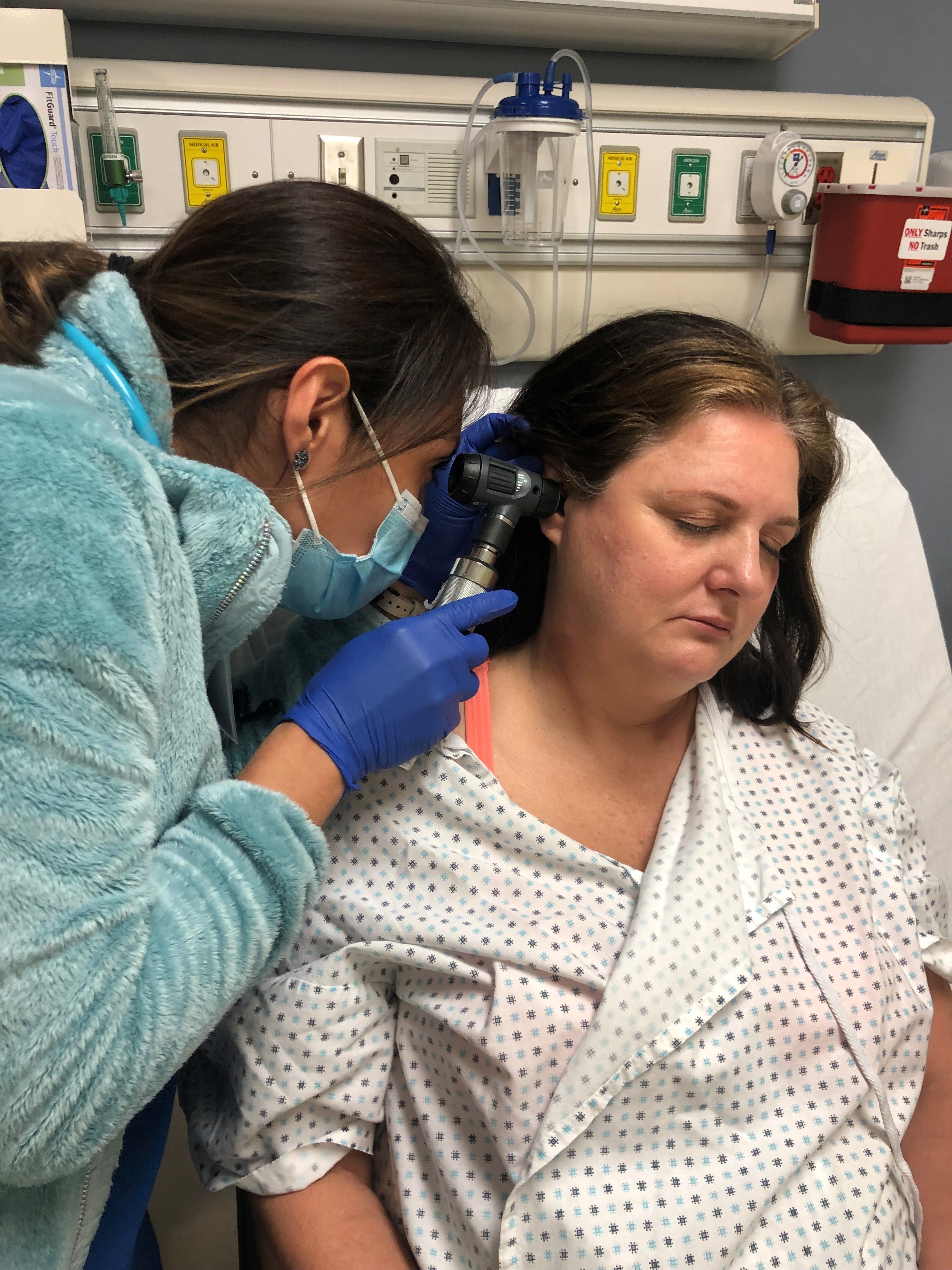
Injury Documentation
Document injuries using both body diagrams and photography if patient has given written consent and verbal assent throughout the examination process. If no injuries were observed, document on body diagrams, “No visible trauma noted.”
- Adults: Document acute injuries only, unless there is a pattern of abuse that the patient discloses.
- Prepubertal children: Document all pertinent injuries.
Key points – Body Diagrams
Consider the following:
- Use the body diagrams provided in the sexual assault evidence collection kit, facility- approved diagrams or diagrams available online at Center of Excellence in Forensic Nursing
- Use a body diagram that most closely matches the anatomy and developmental stage of the patient at the time of the examination. Adult/adolescent, child and infant diagrams are available in the SAEK.
- If patient’s anatomy is different than their gender identity, document patient’s gender identity.
- Use supplemental body diagrams to show injury to parts of the body not easily documented on the full body diagram (i.e., face, head, neck, hands or feet).
- Use an anogenital diagram to document anogenital injuries.
- Consider including a body diagram and an anogenital diagram in every medical forensic record even if no injury is found. See diagrams at Center of Excellence in Forensic Nursing. Follow facility policy.
- Place a patient label with the patient’s full name, date of birth and medical record number on each body diagram.
- If no injury is found, document such, or note on the body diagram by checking the box “No injury noted.”
- Document the measurement, description and location of each injury (in mm or cm) on the body diagram that corresponds to the location of the injury on the patient. Use arrows or numbering to indicate the location of each injury described.
- Describe the injury. See definitions on the Terminology page for list of medical forensic terminology.
- Document the location of anogenital injuries using clock positions when the patient is lying on her/his back. For example, an injury to the clitoris"A small, cylindrical erectile body at the anterior portion of the vulva, covered by the clitoral hood" (Faugno et al., 2012, p. 4). would be at 12 o’clock.
- If you used toluidine blue dye (TBD), document this and positive dye uptake on the anogenital diagram. TBD should be used only by specially trained medical forensic professionalsA licensed medical professional (registered nurse, nurse practitioner, physician’s assistant or physician) who has completed forensic education and clinical requirements that meets or exceeds the Department of Justice recommended standards outlined in “A National Protocol for Sexual Assault Medical Forensic Examinations - Adults/Adolescents Second Edition,” and/or the minimum standards required for certification as outlined by the Texas Attorney General in "Initial SANE certification guide," which includes: • Adult/adolescent patient • 40 hours of didactic education that meets the gu... More.
- Sign name, with credentials, and the date on every diagram.
Procedure for anogenital injuries
When possible, photograph genitalia injuries before inserting a speculum. Use a hands-free method for photograph or image-capture, if possible, so you can use both hands to better visualize anatomy. When taking pictures adhere to the guidelines established on the following page. Use various techniques to better identify injuries or other findings to the genitalia and/or anus"Opening of anal canal" (Faugno et al., 2012, p. 6)..
Use of toluidine blue dye (TBD): Only use TBD if forensically trained in the use of TBD.
- “Toluidine blue dye binds to nucleated squamous cells in the deeper layers of epidermis and when properly applied will only stain areas with acute injuries or areas that have been recently abraded of the top epithelial layer. Use of toluidine blue dye increases the sensitivity of injury detection in the forensic exam and can assist in illuminating injuries for photography and view by non-medical personnel” (American College of Emergency Physicians, 2014, p. 67).
- If using TBD to visualize anogenital injuries:
- Collect evidence before TBD.
- Consider taking a series of photographs without the dye first.
- Apply the dye and photograph before removing dye.
- Consider photographing injuries with dye uptake, after removing excess dye.
Documentation of Assessment Findings, Concerns and Treatment Plan
Document in the medical record any relevant areas of concern and plan of treatment to address.
- All tests, medications and treatments provided, including but not limited to:
- Pregnancy test.
- Tests for sexually transmitted infections (including HIV).
- Medications and prescriptions provided; medications declined and reasons for declining.
- Assessments, including but not limited to:
- Head-to-toe and anogenital assessments.
- Use of speculum (females who are post-menarchal only).
- Use of toluidine blue dye (use only if trained).
- Use of foley catheter to visualize hymen"A collar or semi-collar of tissue surrounding the vaginal orifice" (Faugno et al., 2012, p. 4). More (use only if trained).
- Use of colposcope, digital photographs and alternate light source.
- Evidence collected, including but not limited to:
- Swabs and trace evidence from the patient’s body, location and why it was collected. Put on envelope in patient’s own words using quotes if they give a reason.
- Clothing.
- Photographs taken.
- Discharge instructions signed by both the health care provider and the patient.
- Consider adding a Track-Kit label without the bar code on the patient’s discharge instructions.
- Consider utilizing statements such as, “Sexual assault by history,” or “Concern for sexual assault” as statement of reason for visit.
- Refrain from documenting opinions.
- Use terms “reported” or “stated” rather than “alleged” when documenting patient’s history (Texas Code of Criminal Procedure §56A).
X
Instagram
Linked in
RSSYouTube